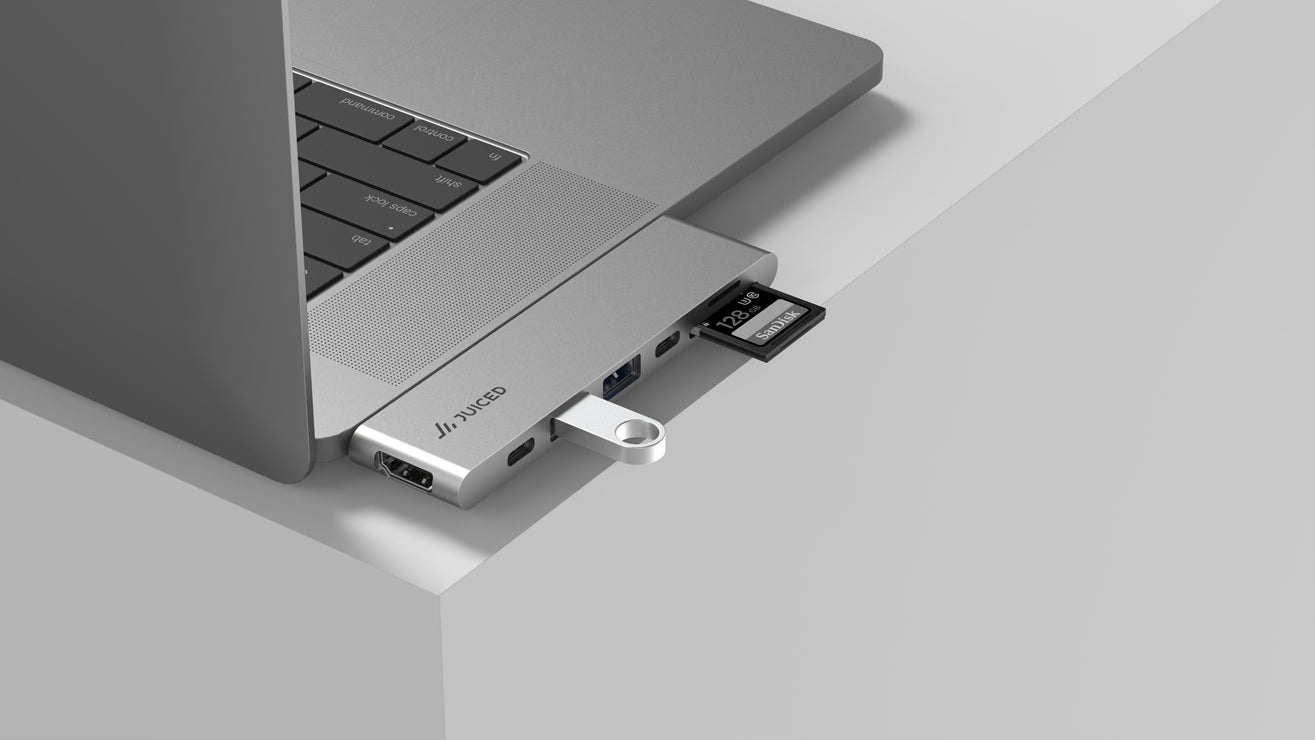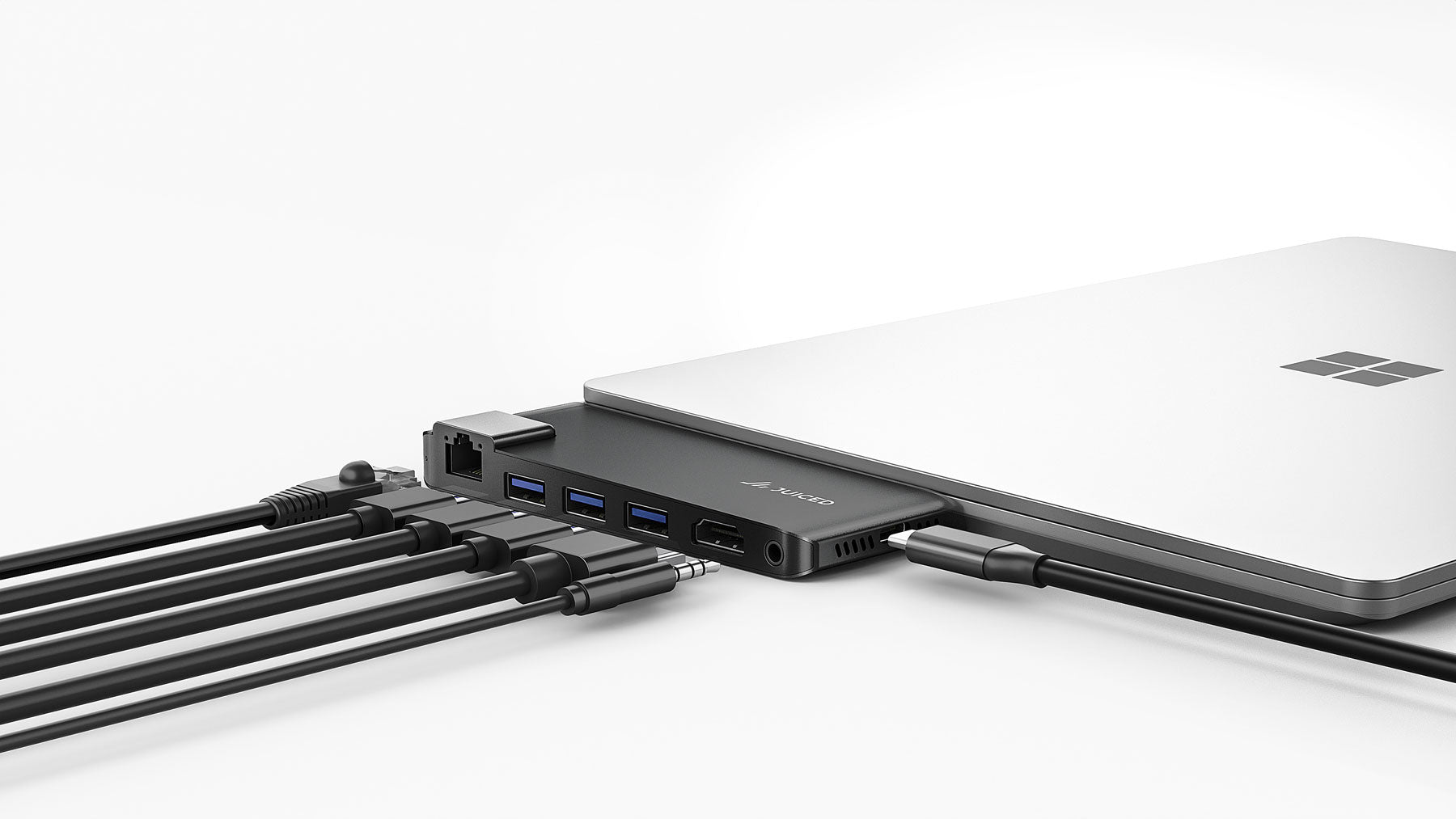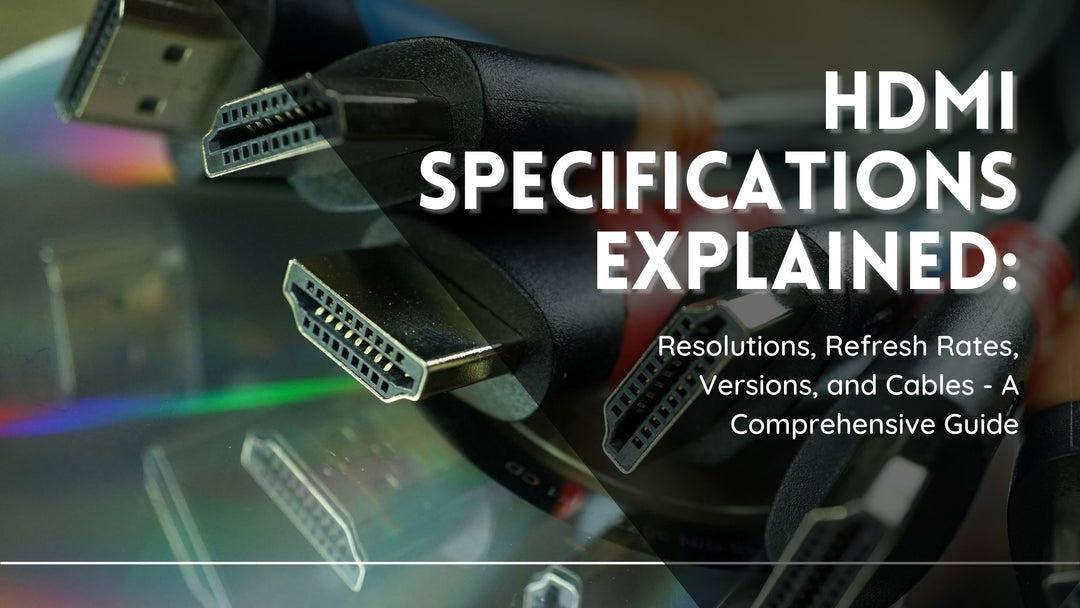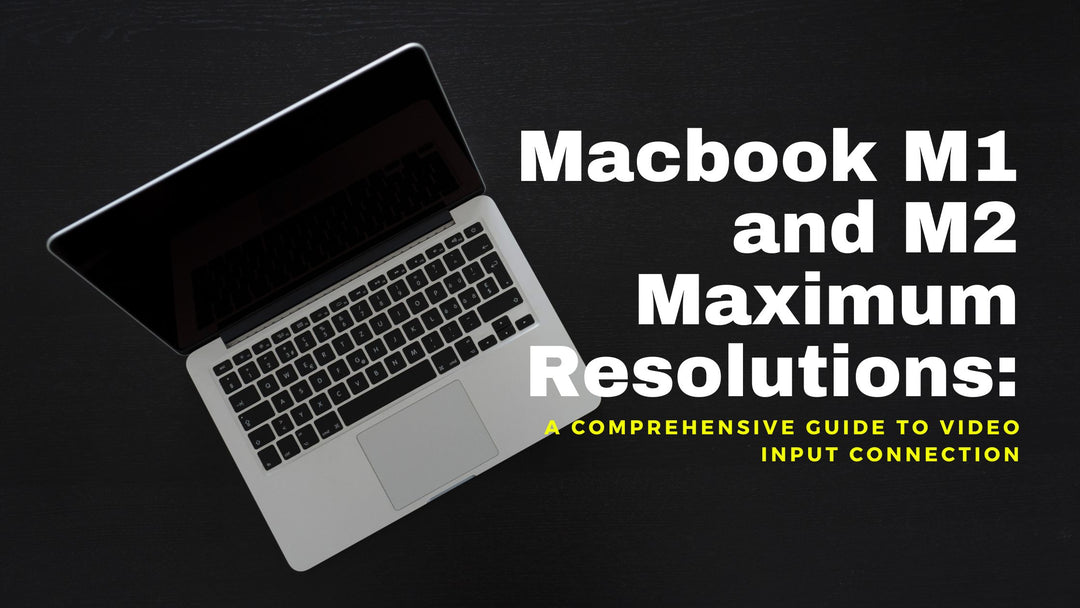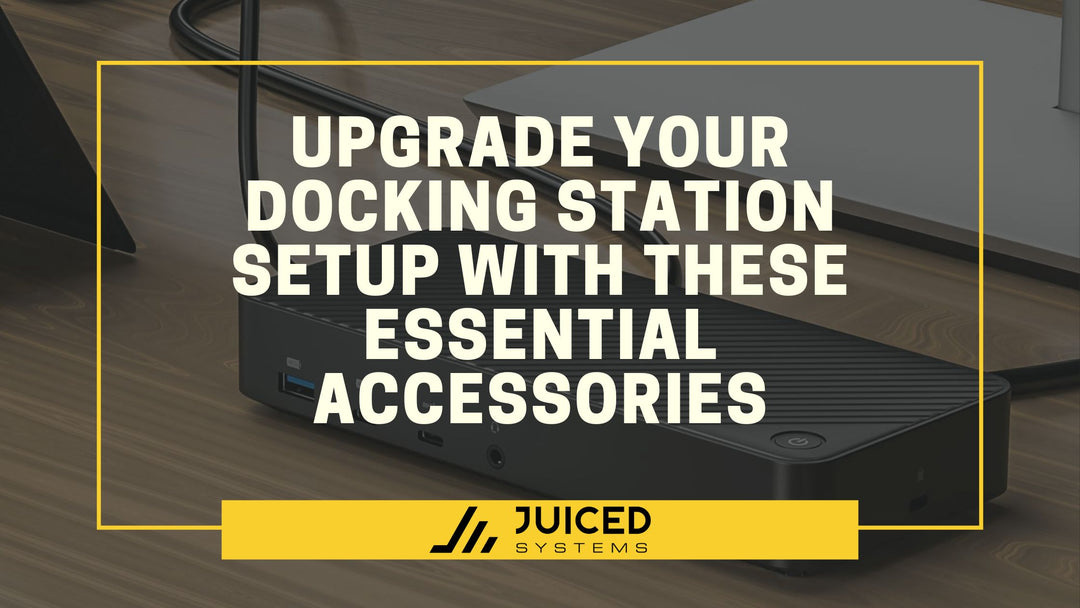Video Output via USB-C? The NovaHUB Is Your Answer
You may have noticed that the phones, tablets or even laptops that you’re buying now don’t have the USB port you’re used to seeing, called the USB Type-A port, or USB-A. This is because they have been replaced by the USB Type-C or simply USB-C ports.
The USB-C is a new type of connector intended for data transfer and power delivery to and from all types of computing devices. Being symmetrical, the USB-C plug can be inserted from either direction, which brings it to the level of Apple’s reversible Lightning plug.
But that isn’t why USB-C has already become so popular. USB-C technology is closely associated with new and powerful technologies like USB Power Delivery, Thunderbolt 3 and USB 3.1.
Older versions of the USB-C ports are built on the USB 3.1 data transfer standard, delivering transfer speeds of up to 5Gbps. Second generation USB-C ports, rightly called SuperSpeed ports, claim to deliver transfer speeds of up to 10Gbps. USB-C also supports Intel’s Thunderbolt 3 data transfer technology for computers that support Thunderbolt, which pushes data transfer speeds as high as 40Gbps (in theory).
Why USB-C?
But why should you care about these new data transfer technologies?
Well, for the first time ever, we can achieve enough data transfer speeds to push high-resolution video content over a USB connection. USB-C features the Alternate Mode, or Alt Mode, which enables adapters to put out video from the USB port to DisplayPort, HDMI, VGA, and all other video connectors found in different televisions, projectors, and other displays.
Second, thanks to this new technology, you can now power your laptop through the USB-C port thanks to its USB Power Delivery feature. The USB 2.0 port could only deliver 2.5 watts of power, just enough to charge a phone excruciatingly slowly. The USB 3.1 improved that to 15 watts – the ones that were considered “fast phone chargers”.
USB PD promises to deliver 100 watts of power, over six times the capabilities of the USB 3.1. This opens up a world of possibilities, such as being able to power your laptop through your USB-C port and even powering peripherals like projectors the same way.
That said, you will need to invest in a few accessories to make these features work for you and take full advantage of your USB-C ports. Learn more about what you need to do for video output through USB-C.
High-Res Video over USB-C
Before going further, you’ll need to invest in a USB-C hub, such as NovaHUB, which allows you to switch connections to various devices as needed. Once you have your hub, go for the DisplayPort, which is made especially for high-resolution video output.
You may be tempted to seek the HDMI port because it’s familiar, but the DisplayPort will give you way higher refresh rates (Hz) and better resolution than HDMI. DisplayPort video content is carried more efficiently through the USB-C connection compared with HDMI with similar refresh rats and resolution.
How It Works
The USB-C connector has four differentials pairs, called lanes, which carry high-speed data. USB 3.2 Gen 2 uses two of the four lanes, wasting the other two. These two free lanes can be repurposed to carry native DisplayPort signals through the Alt Mode feature of USB-C, without losing the performance of the USB 3.1 data transfer side.
With these two lanes, you have enough bandwidth to transmit output to an external monitor at 4k 30 Hz. This is okay for watching movies, but the Windows desktop or MacOS experience will be annoying. To maintain the 60 Hz refresh rate, you’ll have to step down the resolution to 2k or lower.
For 4k@60 Hz, 5K or more than one external monitor, you must use the DisplayPort Alt Mode with all four lanes dedicated to DisplayPort data. The computer and external monitor will still show a regular DisplayPort connection, but you won’t have any space for USB 3.1 data.
One of the only ways to bypass this is to get a Thunderbolt 3 hub, and they don’t come cheap. Additionally, your computer must have Thunderbolt 3 capabilities. Enter NovaHUB.
Why NovaHUB
The NovaHUB is one of the most powerful portable USB-C hubs on the market. The single dongle hub can output 4k@60Hz, an extremely rare quality in hubs on the market for the reasons explained above.
NovaHUB includes an integrated USB 3.2 Gen 2 chipset, offering 10Gbps data transfer speeds on its USB-A and USB-C ports like. A second USB-C port delivers 100 watts to power even the biggest guzzler of laptops currently on the market. That means your laptop stays fully charged while you’re using the NovaHUB however you please.
You can use the Gigabit Ethernet port (10/100/1000) for uninterrupted LAN connection and transfer SD card data conveniently on the dedicated slot. It has a flat cable to prevent the connector and hub from getting damaged.
The body is made from aluminum, which is lightweight (portable) but sturdy and durable. Measuring just 120 by 55 by 17 mm, the NovaHUB is very compact. The NovaHUB carries:
- Two USB-A ports with transfer speeds of 10 Gbps
- One USB-C port for USB Power Delivery
- One USB-C port with transfer speeds of 10 Gbps
- One HDMI port supporting 4k@60 Hz
- Gigabit Ethernet port (10/100/1000)
- One SD 3.0 slot
Using the NovaHUB, you can either mirror or extend your laptop screen to a 4k resolution device without affecting video output quality.
Conclusion
Using the USB-C port to mirror your work screen can help to increase productivity if you’re in a field where the size of display and resolution is vital to performance (design work, photography, videography, etc.) Even if all you want is to be able to watch your videos on a bigger and better screen, you will enjoy the versatility and ease of using a USB-C hub such as the NovaHUB.
You don’t have to put up with poor video output on your devices any longer – invest in the NovaHUB and find more ways to make your viewing and data transfer experience so much better.




